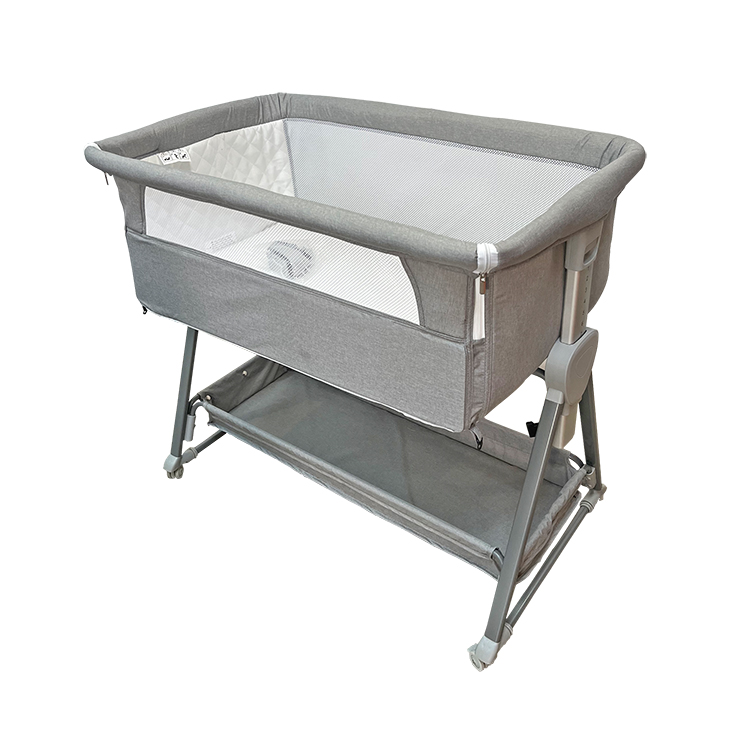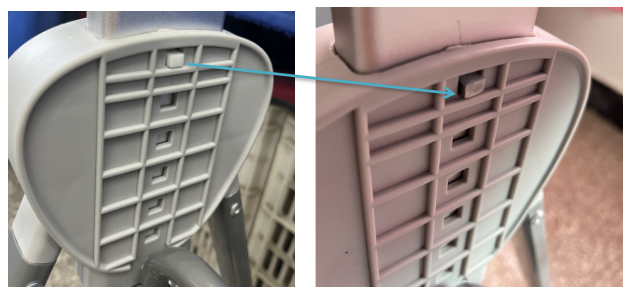Introduction
Choosing the right size bedside bassinet for your bed is essential for ensuring your baby’s safety and comfort. With so many options available, it can be challenging to determine which bassinet will fit your bed properly. In this guide, we’ll discuss how to choose the right size bedside bassinet, focusing on extra tall bedside bassinet.
1. Measure Your Bed
Before purchasing a bedside bassinet, you’ll need to measure the height of your bed. An extra tall bedside bassinet is designed to be level with the top of your mattress, allowing for easy access to your baby while lying in bed. Measure the height from the floor to the top of your mattress to determine the correct height for your bassinet.
2. Consider the Bassinet’s Height
Extra tall bedside bassinets are typically designed to accommodate taller beds, ranging in height from 24 to 30 inches. Measure the height of your bed and compare it to the height of the bassinet to ensure a proper fit. The bassinet should be tall enough to reach the top of your mattress without leaving a gap that could pose a safety hazard for your baby.

3. Check the Bassinet’s Weight Limit
When choosing a bedside bassinet, it’s essential to consider the weight limit. Extra tall bassinets are often designed to accommodate larger babies, with weight limits ranging from 15 to 30 pounds. Make sure the bassinet you choose can safely support your baby’s weight.
4. Consider the Bassinet’s Width and Length
In addition to height, you’ll also need to consider the width and length of the bassinet. Extra tall bassinets are typically wider and longer than standard bassinets to provide ample space for your baby to sleep comfortably. Measure the space next to your bed to ensure the bassinet will fit without overcrowding the room.
5. Look for Adjustable Height Features
Some extra tall bedside bassinets come with adjustable height features, allowing you to customize the height to fit your bed perfectly. This can be especially useful if you have a non-standard height bed or if you plan to use the bassinet in multiple locations.
6. Consider Portability
If you plan to move the bassinet frequently, consider its portability. Look for a bassinet that is lightweight and easy to move from room to room. Some bassinets also come with wheels, making them even more portable.
7. Safety Considerations
When choosing a bedside bassinet, safety should be your top priority. Look for bassinets that meet current safety standards, including JPMA certification. Ensure the bassinet has a sturdy frame and a secure attachment mechanism to prevent it from tipping over.
8. Consider Additional Features
Finally, consider any additional features that may be important to you. This could include storage compartments, a rocking feature, or a canopy to block out light. Choose a bassinet that meets your needs and preferences.
9. Consider the Material and Construction
The material and construction of the bedside bassinet are also important factors to consider. Look for a bassinet made from durable materials that are easy to clean. Mesh sides are ideal for allowing airflow and visibility, while a sturdy frame will ensure the bassinet remains stable and secure.
10. Check the Mattress Quality
The quality of the mattress is crucial for your baby’s comfort and safety. Look for a bassinet with a firm, flat mattress that fits snugly against the sides of the bassinet. Avoid bassinets with soft or overly plush mattresses, as these can increase the risk of suffocation.

11. Ensure Proper Ventilation
Proper ventilation is essential to prevent overheating and ensure your baby’s safety. Look for a bassinet with mesh sides that allow air to circulate freely. This will help regulate your baby’s temperature and reduce the risk of SIDS (Sudden Infant Death Syndrome).
12. Check for Safety Features
When choosing an extra tall bedside bassinet, check for safety features such as a sturdy frame, a secure attachment mechanism, and a locking mechanism to prevent accidental folding or collapsing. Look for bassinets that meet current safety standards and have been tested for durability and stability.
13. Consider Your Baby’s Growth
While an extra tall bedside bassinet is designed to accommodate taller beds, it’s also essential to consider your baby’s growth. Choose a bassinet with a weight limit and size that will allow your baby to sleep comfortably for several months. Consider how long you plan to use the bassinet and whether it will accommodate your baby as they grow.
14. Look for Ease of Use
Finally, consider how easy the bedside bassinet is to use. Look for a bassinet that is easy to assemble, adjust, and clean. Consider whether the bassinet has any additional features, such as storage compartments or a rocking feature, that will make caring for your baby more convenient.
Conclusion
In conclusion, choosing the right size bedside bassinet for your bed is essential for ensuring your baby’s safety and comfort. Consider the height, weight limit, width, and length of the bassinet, as well as any additional features that may be important to you. With careful consideration, you can select an extra tall bedside bassinet that fits your bed perfectly and provides a cozy sleeping space for your baby.
FAQs for extra tall bedside bassinet
1. Does the extra tall bedside bassinet require regular cleaning and maintenance?
Yes, it requires regular cleaning and maintenance. After each use, the debris and stains in the cradle should be promptly cleaned and kept dry and clean. Regularly check whether the screws, nuts and other parts of the cradle are loose or damaged, and replace or repair them in time if necessary.
2. How old can the extra tall bedside bassinet be used on babies?
Its duration should be determined based on the baby’s growth and weight restrictions. Generally speaking, when a baby is able to sit or stand on his own, a cradle is no longer suitable. In addition, if the baby’s weight exceeds the carrying capacity of the cradle, use should also be discontinued.
3. How portable is the metal extra tall bedside bassinet?
Metal bassinets tend to be relatively portable. Metal materials have lighter weight and stronger structural stability, which makes metal cradle relatively easy to carry and move. Additionally, metal bassinets are often designed with removable parts, which further increases their portability. Users can easily disassemble the cradle into several parts and then place it in the trunk of their vehicle or carry it on their shoulders for easy portability to different places.
Related Products




